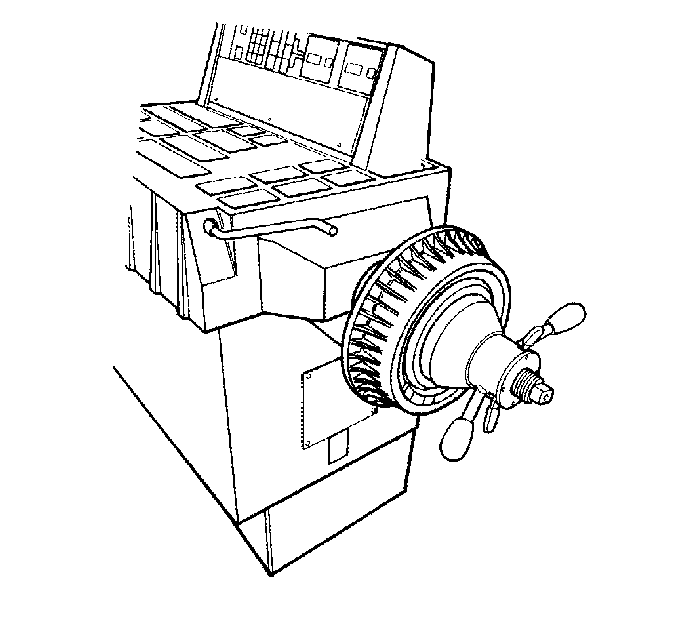Rotors and drums do not have a set tolerance. However,
rotors or drums with more than 21 g (0.75 ounce) imbalance have
the potential to cause vibration. Inspect the rotors and the drums for imbalance
using either the on-vehicle or the off-vehicle method.
Checking Rotor/Drum Imbalance (On-Vehicle)
- Support the vehicle rear axle on a suitable hoist. Refer to
Lifting and Jacking the Vehicle
.
- Remove the rear tire and wheel assemblies. Refer to
Tire and Wheel Removal and Installation
in Tires and
Wheels.
Caution: One or more of the following guidelines may apply when performing specific required tests in the work stall:
| • | When a test requires spinning the drive wheels with the vehicle jacked up, adhere to the following precautions: |
| - | Do not exceed 56 km/h (35 mph) when spinning one drive wheel with the other drive wheel stopped. This limit is necessary because the speedometer indicates only one-half the actual vehicle speed under these conditions. Personal injury
may result from excessive wheel spinning. |
| - | If all of the drive wheels are spinning at the same speed, do not exceed 112 km/h (70 mph). Personal injury may result from excessive wheel spinning. |
| - | All persons should stay clear of the rotating components and the balance weight areas in order to avoid possible personal injury. |
| - | When running an engine in the repair stall for an extended period of time, use care not to overheat the engine and the transmission. |
| • | When a test requires jacking up the vehicle and running with the wheels and brake rotors removed, adhere to the following precautions: |
| - | Support the suspension at normal ride height. |
| - | Do not apply the brake with the brake rotors removed. |
| - | Do not place the transmission in PARK with the drive axles spinning. |
| - | Turn Off the ignition in order to stop the powertrain components from spinning. |
| • | When running an engine in the work stall, use the exhaust removal system to prevent breathing dangerous gases. |
- Reinstall
the wheel nuts in order to retain the rotors/drums.
- Run the vehicle at the complaint speed while inspecting for the
vibration.
- If the vibration still exists, perform the following steps:
| 5.1. | Remove the rotors/drums. |
| 5.2. | Run the vehicle back to speed. |
- If the vibration is eliminated, perform the following steps:
| 6.1. | Remove the rotors/drums one at a time. |
| 6.2. | Perform the vibration test for each rotor/drum. |
| 6.3. | Replace the rotor/drum that is causing the imbalance. |
| 6.4. | Inspect the balance of the new rotor/drum. |
Checking Rotor/Drum Imbalance (Off-Vehicle)
- Measure the diameter and the width of the rotor/drum.

- Mount the rotor/drum on
a balancer in the same manner as a wheel.
Important: You can only inspect the rotors/drums for static imbalance. Ignore the
dynamic imbalance reading.
- Inspect for static imbalance.
- If the rotor/drum shows imbalance, replace the rotor/drum.
- Inspect the balance of the new rotor/drum before you install the
rotor/drum on the vehicle.

